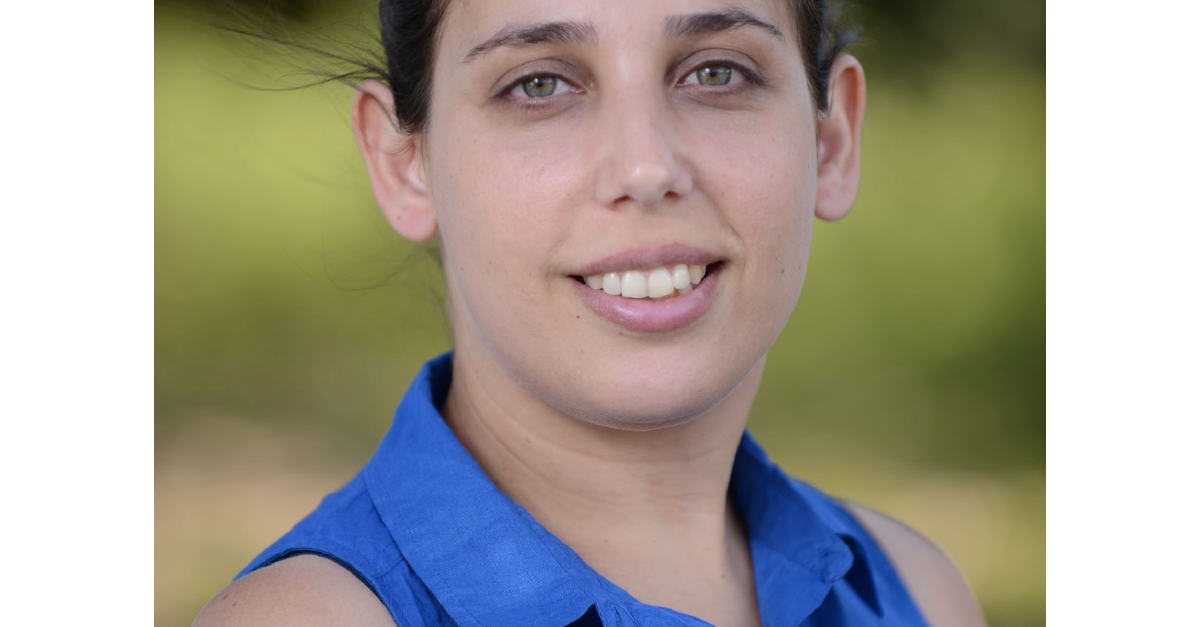
I’m using a punny title to draw attention to an exploration of the value of using Bayesian MCMC (Markov chain Monte Carlo) in the reserving process. It’s been just over 10 years since the publication of the inaugural CAS monograph, “Stochastic Loss Reserving Using Bayesian MCMC Models,” by Glenn Meyers. Since then, we have seen enhanced availability and ease of use of open-source tools for Bayesian MCMC. While the creation of Stan was a major leap forward for Bayesian MCMC modeling, for most of us, it is far more practical today with open-source packages such as tidybayes, ShinyStan, and ggdist, improving the ease of use and reducing the need to write as much code. Meyers’ monograph is now included in the CAS Exam 7 content outline and general concepts of Bayesian MCMC were included on the MAS-II exam syllabus from 2018 to 2022. Monograph No. 1 has recently been revised and updated as CAS Monograph No. 8
To get some input on why practitioners should consider supplementing their existing reserving approaches with Bayesian MCMC, I reached out to Maochao Xu and Michael Larsen, who each recently published papers highlighting the benefits of using Bayesian MCMC instead of other methods in reserve and IBNR estimation.
First, a brief very nontechnical description of what is happening in Bayesian MCMC techniques. Actuaries are generally familiar with the basics of Bayes’ Theorem and its relationship to credibility (see Actuarial Review article “Imaginary Balls” by Dave Clark). In an extremely nontechnical way, it is restated in words like “If I believe X and I see Y, what’s the probability that Z is true?” When we iterate through all the possible Zs we could believe and consider our prior beliefs that comprise X with our observed data Y, we end up with a probability distribution known as the posterior distribution. Many are familiar with the concept of conjugate pairs for prior distribution and likelihood functions, however a key benefit of the algorithms behind Bayesian MCMC is using simulation for iterative exploration of the solution space, thereby relaxing the need for mathematically tractable conjugate pairs of prior distributions and likelihood functions. We now get to combine the brute force of modern computer processing with the actuarially appealing aspect of Bayesian modeling: The more credible the observed data Y is, the less the posterior result will resemble the prior beliefs of X and the more it will resemble what we observed. In Bayesian MCMC, the prior distribution is usually describing a distribution of some parameter within an assumed stochastic distribution, and it is possible to establish a “flat prior,” which is essentially setting an initial belief of a uniform distribution of the parameter in question. A model might use a flat prior distribution to represent that there is no preexisting knowledge about the parameter in question. With that brief reminder, we can start looking at recent research papers and asking the authors why they think there is great value in exploring Bayesian MCMC for reserve estimation.
Maochao Xu is a cyber insurance advisor and professor at Illinois State University. He and his coauthors used Bayesian MCMC to estimate unreported or undiscovered cyber breach incidents in their Variance paper “Bayesian Nowcasting Data Breach IBNR Incidents.” The paper keeps things fairly simple by looking at estimation of unreported counts of events after arranging the data in the familiar age-to-age development structure used for loss reserving triangles. Techniques are first refined through a study using synthetic data and then tested on empirical data compiled from data collected by the Identity Theft Resource Center. Testing demonstrates that Bayesian MCMC has higher predictive accuracy than six alternate methods, including the Mack chain-ladder model and the England and Verrall bootstrap chain-ladder model. The values calculated for RMSE (root-mean square error) and MAE (mean absolute error) metrics on the testing dataset for the next best performing models were more than double those of the Bayesian MCMC model and for the worst performing model the metrics were at least six times as high. When asked about other benefits of Bayesian MCMC, Xu pointed out that “Bayesian MCMC, in fact, provides a full distribution that can be used for tail risk assessment and solvency capital requirements” while providing flexibility “to handle hierarchical models and dependence across accident years or lines.” This sort of model structure can help when data is sparse.
Michael Larsen’s “Handling Sparse Data for Reserving Using Bayesian MCMC” was published in the CAS E-Forum. He began exploring Bayesian MCMC toward the end of his career and continues to explore it in retirement, including partnering with Tom Struppeck to offer a workshop session on Bayesian MCMC for reserving at the 2025 CLRS. Larsen’s paper explores the impact of different choices for prior distribution (from flat priors which equate to no prior belief to priors setting tight bounds on expected results) on a series of simulated general liability reserve development datasets. By testing models with different prior distribution assumptions and testing simulated datasets with more or less observed data points, Larsen demonstrated two actuarially appealing aspects of Bayesian MCMC: the model places less reliance on prior assumptions when there is “enough” data, and it shows the importance of using a good prior assumption when there is less data. Asked to look back at where Bayesian MCMC would have helped earlier in his career, Larsen echoed the value of the model flexibility and included two specific examples. “It would have been useful to test the hypothesis that claim operations or underwriting operations has changed in a given time period and what is a reliable estimate of the effect of that change on development patterns (the same is true for loss costs/inflation). Also, when one is doing state-level ratemaking, the Bayesian MCMC environment lets one bring in the reserving model results in the form of a prior set of distributions for the regression parameters, but the state-level loss estimates will respond to state-level results to the extent they are credible.”
Initial exploration of Bayesian MCMC could be a bit baffling if you haven’t spent time with it before, and both authors highlight the value of spending hands-on time to get comfortable with the process. Larsen reflected that setting up priors became less mysterious when he realized that all one is doing is providing a sensible starting point for the reserving model for a given pass through the Bayesian MCMC modeling tool. “Once I realized that I am just putting in guard rails to tell the MCMC machinery that it’s not necessary to search the entire real number line for the optimal parameter and I can do a reality check by putting some choices into Excel and seeing some graphs … software exists today that will let you directly see what the end result of your selected prior distributions are without being modified by any data,” said Larsen. And the benefits of getting comfortable with it, especially when you need to model reserve ranges, can be well worth it.
When asked to compare Bayesian MCMC to other tools for estimating reserve ranges, Larsen said, “In my experience for reserving, it is the best tool, although mixed models can work in some cases and the LASSO approach merits further review by someone with more familiarity with that tool. Bootstrapping paid link ratios failed to provide reliable estimates of the distribution for the longer tailed lines, as well as failing to allow one to pull out the effect of varying inflation on development patterns or test for the effect of correlation on the estimates. Bootstrapping paid link ratios is the easiest approach to implement, but if one puts in the criterion that the results have to be realistic, it can fail badly. Mixed models can work for large datasets where one only needs to institute a form of least squares credibility weighting between groups (like accident years), check for and maybe account for correlation, and model the variance independent of the mean, but one has to bootstrap the parameters to get to the distribution and one cannot carry forward the parameter estimates to ensure that the change in the distribution results is well controlled.”
What are some things to watch out for once you’ve decided to explore Bayesian MCMC for reserving? “A common trap is to make the model structure more complex than necessary, given that the Bayesian MCMC can accommodate very flexible structures,” said Xu. “This can increase the risk of overfitting and pure prediction performance. Practitioners may need to pay attention to the prior choices and model assumptions.” Larsen pointed out, “It’s possible to get too hung up on reviewing individual parameters rather than looking at graphs of the overall results for reasonability and/or fail to compare the reliability of diagnostics to compare the reliability of different models.”
This last point is well demonstrated in Larsen’s paper when he shows that even when posterior distribution parameters are somewhat different between models which differ in prior assumptions, the cumulative distribution of estimated total reserves can end up being quite close.
Key concerns when changing from a simple chain-ladder link ratio selection process to using a stochastic model may include that the model may be complex and nonintuitive and that there may be challenges in explaining results to others. Xu spoke to this when he said, “In my opinion, the model is much easier to interpret once you are familiar with Bayesian methods, and the posterior results tend to feel quite intuitive in that context. For colleagues without a Bayesian background, it can take more effort to explain. However, it is much easier to talk about the probability of reserves falling below a certain threshold or showing the range of likely outcomes instead of focusing on the technical details of priors and MCMC.” We can see in Larsen’s paper that it’s possible to create outputs summarizing the assumptions of the prior and the results of the posterior under different assumptions in a graphical way.
Larsen added that, “Once you have a working model, you have documented your choices in a format that can be audited. Your prior distributions identify your starting assumptions for the different lines in a format that an outside actuary or auditor can review for reasonability. Your workflow will identify the dataset and the change in distribution to the parameters can be replicated (assuming you set a simulation seed) which provides an audit trail for someone else to review and verify that the results do start with a sensible set of assumptions and the data does influence the reserve estimates to the degree it’s credible. You are set up to start for the next reserving cycle in a format that lets one objectively test the following:
- Should last quarter’s model be modified?
- Was there a change in company operations that affected the development patterns?
The last reserve analysis’s posterior distribution provides the means to compare actual to observed activity. Those tests can help reassure the business unit or general company management that you have made a good faith effort to respond to questions.”
If you’re still waffling over whether moving to a Bayesian MCMC model approach might work for your reserve process, Larsen pointed out the natural fit of this approach with traditional actuarial analysis. “Most practicing reserving actuaries are at heart Bayesians who look at the model results as being plausible rather than precisely accurate, with the prior distributions providing the means to let them explicitly recognize that point of view.”
If you’re ready to get started or just want to learn more about Bayesian MCMC, Larsen and Xu suggested some additional resources beyond the monograph and papers cited here (which include sample code). In addition to helping you learn about Bayesian modeling, these works give insight into tuning the Bayesian MCMC algorithm and using relevant open source software tools.
- https://mc-stan.org/
- “Bayesian Data Analysis,” by Gelman et al.
- Statistical rethinking with brms, ggplot2, and the tidyverse: Second edition bookdown version.
- “Statistical Rethinking,” by Richard McElreath.
- “brms: An R Package for Bayesian Multilevel Models using Stan,” Paul-Christian Bürkner, Journal of Statistical Software 2017. https://doi.org/10.18637/jss.v080.i01
- “Advanced Bayesian Multilevel Modeling with the R Package brms,” Paul-Christian Bürkner, The R Journal 2018. https://doi.org/10.32614/RJ-2018-017
- Vignettes included in the tidybayes, ShinyStan, and ggdist2 packages. ●
Rachel Hunter, FCAS, is a member of the AR Working Group and Writing Subgroup.













